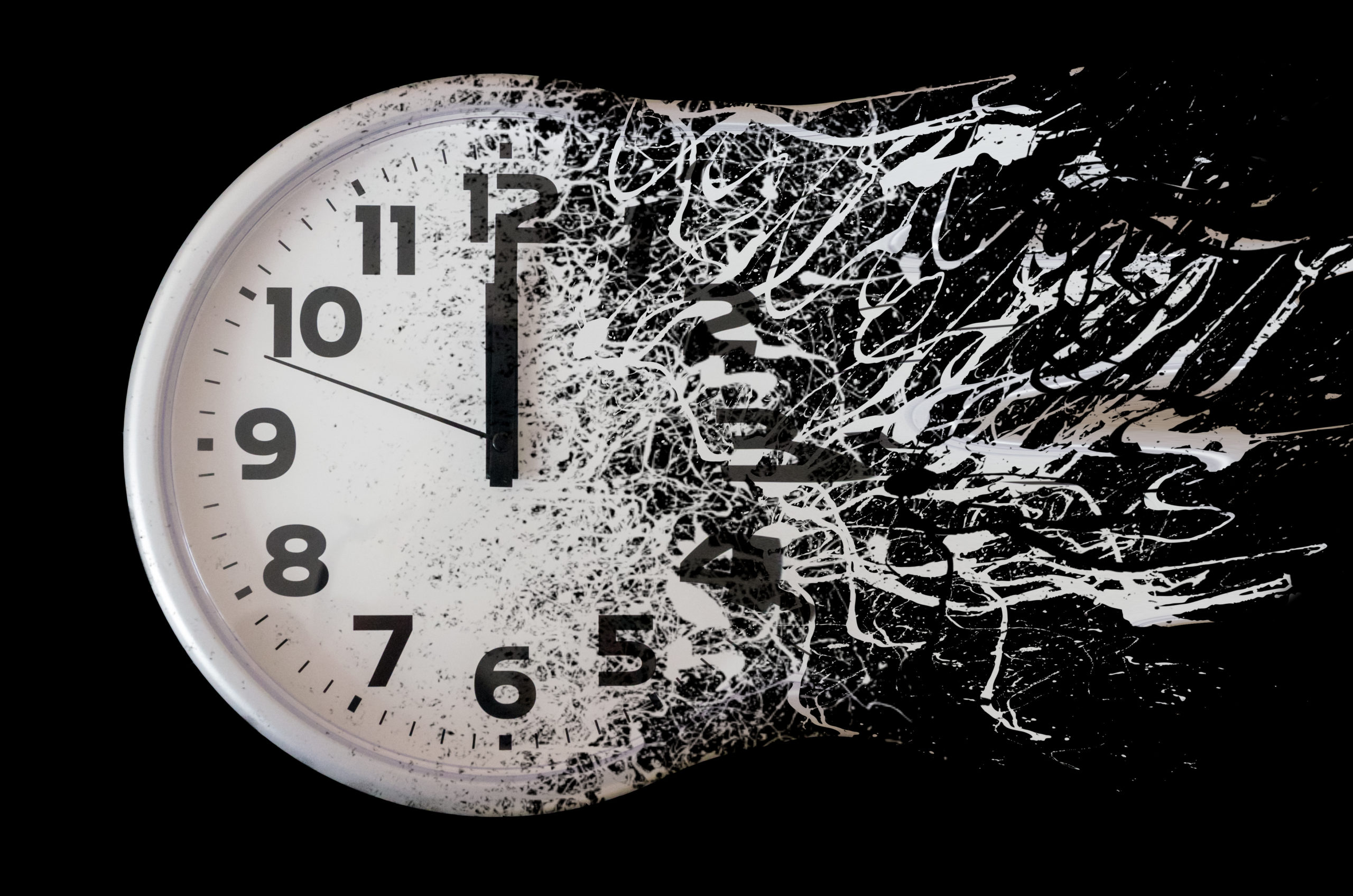We all get the same amount of hours in a day. Some people definitely seem to have more. Writers like Steven King and James Patterson, performers like Beyoncé, filmmakers who release a new blockbuster or shoe-gazing comedy every year, and world leaders who are across all of humanity’s problems. Even some humble ordinary folks seem to get more done than appears possible, but 24 hours is the contract our planet signed with the sun so there it is, cut and dried.
In these distracted and competitive times, there is an overwhelming thirst for knowledge on productivity and life hacks to beat procrastination. Pulitzer Prize-winning journalist Charles Duhigg finds it incredibly problematic that even though we have more tools and digital assistance than ever in achieving our goals, that same luxury interrupts us more often and makes it so much harder to focus.
In researching his latest book Smarter Faster Better Duhigg spent an inordinate amount of time (well-structured time, we assume) talking to over 400 people about productivity, collecting several hundred tips and hacks, many of which contradicted one another. So what reliably and consistently sets ultra-productive people and organizations apart?
One of the key commonalities he found was the ability of some people to selectively focus. It turns out the most efficient among us are constantly prioritizing and asking themselves: what are the goals that I should be chasing after right now? According Duhigg, this process starts with mental imagery, what he calls building a ‘mental model’ in your head at the start of each day, something Duhigg now dedicates his morning commute time to. He advises that we spend that time picturing what our day will look like – what do you need to get done? What are the events you can expect? How will you go about doing them? We are surrounded by the needs of others all day long, whether it’s a boss, colleagues, family or friends, email requests or social notifications, and it’s our natural impulse to react immediately when called upon. A notification ‘ding!’ is tragically pavlovian. Many of us will get a text while we’re busy and send a quick reply that we later regret, or blurt out an unsatisfactory answer to a boss who puts us on the spot. People with a mental model in their minds, on the other hand, already know what to focus on, and have the ability to say or ‘Can we discuss that at a later time?’ or simply leave a text or email to sit for a while. “The more that I have thought through what’s about to occur, the more that I have a strong vision in my mind of what I should expect and anticipate, the more my subconscious is going to be able to decide this is what you should focus on.” Instead of reacting immediately, your time is actually much better spent taking a couple of minutes to make a better decision about where your focus should go.
Charles Duhigg’s most recent book is Smarter Faster Better: The Secrets of Being Productive in Life and Business.
Charles Duhigg: Nowadays it’s incredibly hard to stay focused. There’s so many distractions around us at any given moment. Your pocket vibrates at any given moment because you’re getting ten new emails and on social media there’s all these new notifications and the phone is ringing and your kids need help and your colleagues are coming up because you are working in an open office plan and they’re asking you to chime in on some memo. Maintaining focus nowadays is harder than ever before. But it’s way more critical too. One of the things that we know about the most productive people and the most productive companies is that they create ways to enhance their focus. They manage their mind in such a way that they’re able to focus on what’s important and ignore distractions much better. And the way that they do this is by what’s known as building mental models.
Essentially telling themselves stories about what they expect to see, engaging in this kind of inner dialogue about what they think should be happening that allows their brain almost subconsciously to figure out what to pay attention to and what to ignore. One of my favorite examples of this is a big study that was done of nurses in NICUs. Some researchers from a group named Client Associates went into some hospitals because they wanted to figure out why some nurses were so good at paying attention to the right things whereas others got distracted by all the noise and bustle around them. And what they found is that the best nurses in NICUs which is the neonatal intensive care unit who were handling these babies, the nurses who were almost had a sixth sense or an ESP about figuring out which babies were sick and were getting sicker were the ones who were constantly telling themselves stories about what they expected to see as they were walking around the hospital. So one of my favorite interviews from this study was with a nurse named Darlene. And Darlene said that what she would do is that she always was keeping a picture in her brain of what she thought the perfect baby should look like. And so she would walk through the unit and she would notice when babies didn’t kind of match that picture in her brain, right. And they would match – they would mismatch that picture in kind of odd ways.
Like she might be walking past a crib and she might expect a baby to be crying because babies cry all the time. And so if a baby was being uniquely silent she would go over and she would try to figure out what’s going on. Like why is this baby being so quiet. Now to all the other nurses a quiet baby seems like a good thing. It seems like that baby is happy and doesn’t need any attention. But to Darlene because she has this picture in her head of what the perfect baby should look like when she sees a quiet baby she thinks that doesn’t match the picture in my head. I need to go pay attention. And so she’d walk over and she’d see all these things that are all small issues on their own, right. Maybe the baby’s blood was taken from its heel and instead of a dot of blood on the Band-Aid there’s a little bit of a bigger splotch. Maybe the baby’s temperature is a little bit elevated. But nothing that like is out of place. Nothing that’s worrisome. But for Darlene and nurses like this who keep this picture in their head, this mental model of what should be occurring all of those things don’t jive with the story inside their head. And so as a result their attention is grabbed by it and they start saying to themselves why? Why is this baby bleeding a little bit more than I expected? Why is its temperature off just a few degrees? And in this case they discovered that the baby was incredibly sick. And there was not a lot of evidence that it was sick. And in fact if they had waited half an hour or 45 minutes more the baby actually probably would have passed away. But because Darlene noticed all these things, because the baby that she was seeing in real life didn’t match the picture in her head she acted immediately. They started the child on antibiotics. The sepsis, the infection in its system was stamped out.
But the only reason that Darlene was able to notice these warning signs, the only reason she started to have this ESP or sixth sense for something going wrong was because she had a strong mental model. She had a picture in her head that she was comparing reality to. Now not all of us work in NICUs, right. We don’t work in hospitals. We’re not dealing with life and death issues. But think for a minute about what it’s like when you walk into a meeting and your boss asks you an unexpected question, right. Or you’re sitting there and you’re juggling the kids and dinner and suddenly your phone vibrates and it’s this email that causes this spike of panic. Our instinct in a moment like that is to react immediately, to type something that we end up regretting later on. Or to answer our boss and blurt something out. And we think to ourselves afterwards god, I could have put that so much more eloquently. Why are some people so much better at maintaining their focus and not reacting and not getting distracted by all these things? It’s because ahead of time they’ve envisioned what they expect to see. They’ve envisioned what they expect to occur. So on the subway when they’re riding to work they think about what is this day going to be like. I know that I’m going to this meeting. What do I expect to occur at that meeting. And so when they walk in and their boss asks them some unexpected question their brain almost subconsciously says I didn’t expect that question to occur. This isn’t matching the picture in my brain of what I anticipated. So I need to put that question off. I need to say can we take that off line and I’ll answer that later. Or they have a picture in their brain of what it’s going to be like to deal with the kids and to make dinner. There’s some type of expectation. And so as a result when their pocket buzzes and an email comes in they can say I can’t handle this right now. I need to give myself five minutes and I’ll deal with this later.
I use this all the time. It used to be when I would ride the subway in to work I would spend that time reading the paper or I would try to get caught up on memos or something else. What I do now is I put everything away and I spend that 30 minutes just trying to envision what is this day going to be like. Because I know that the more that I have thought through what’s about to occur, the more that I have a strong vision in my mind of what I should expect and anticipate, the more my subconscious is going to be able to decide this is what you should focus on, this is what you can safely dwell on. I’m trying to train my brain by just doing a couple of minutes of thinking through what’s about to occur to make better decisions about where my focus should actually go.







